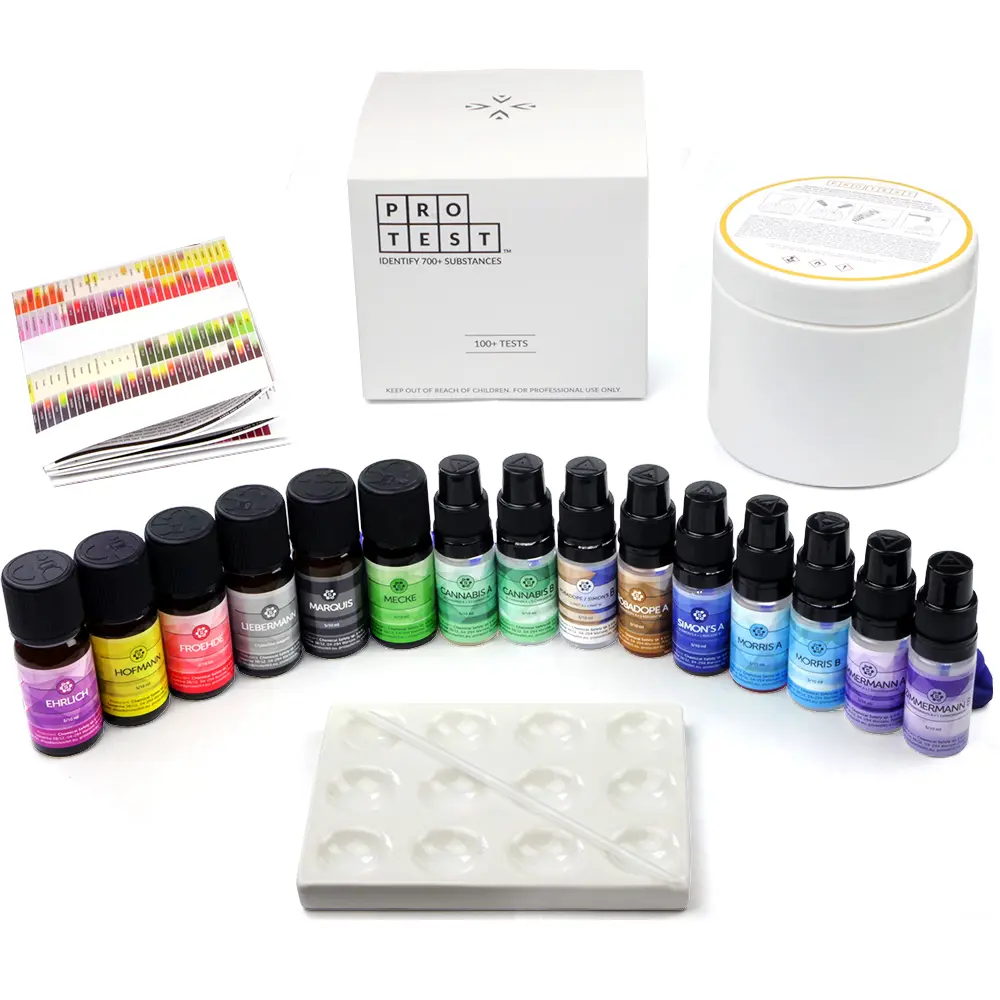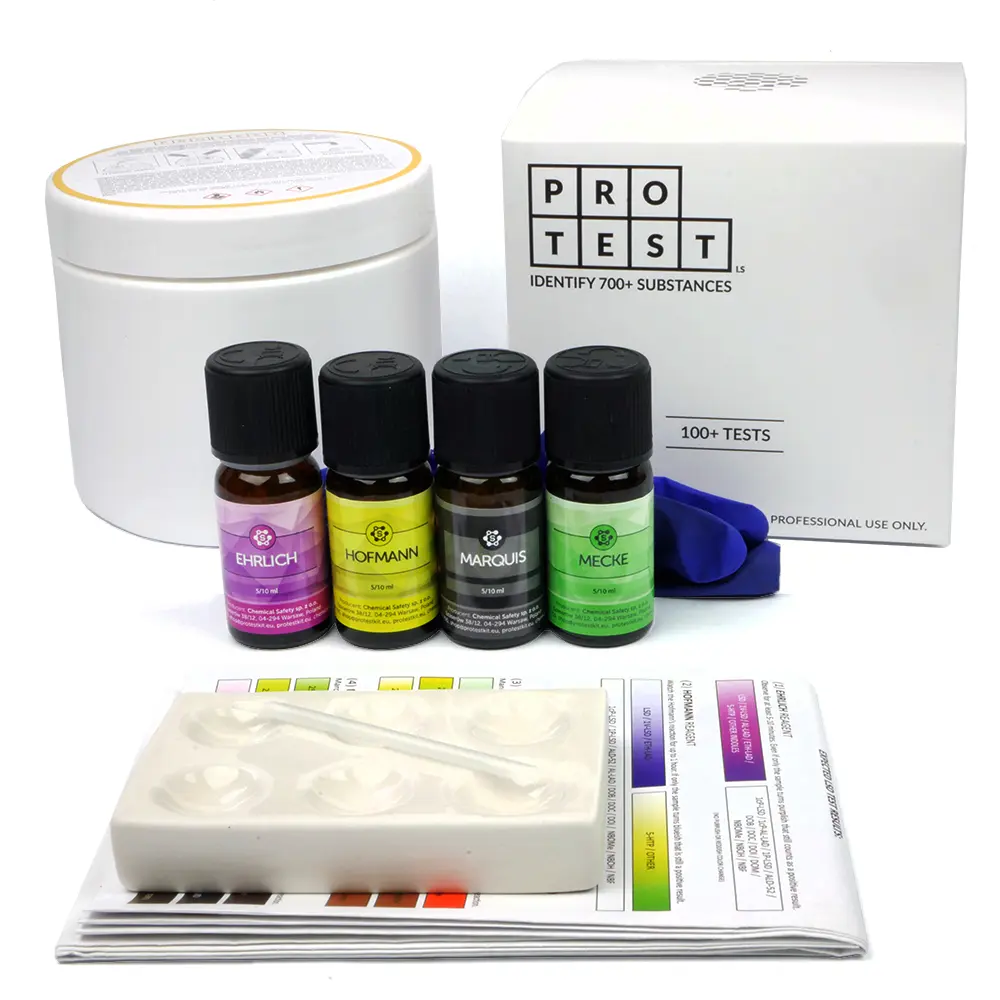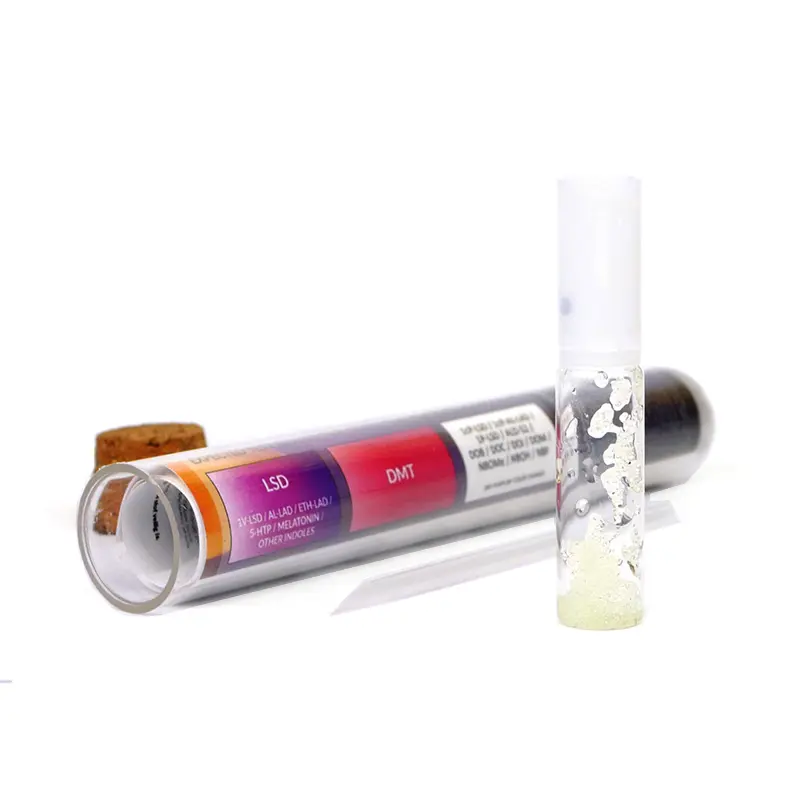How to test LSD derivatives?
- Activate sample with alkaline reagent
- Apply reagent Ehrlich or Hofmann
- Wait about 15 minutes for results
- Check the result after 1 and 12 hours
- Make sure the sample changes color
- Rely primarily on the Hofmann reagent
New way of testing LSD derivatives:
- By pre-soaking the sample in an alkaline solution before testing
- By prolonged exposure to reagent Ehrlich or Hofmann
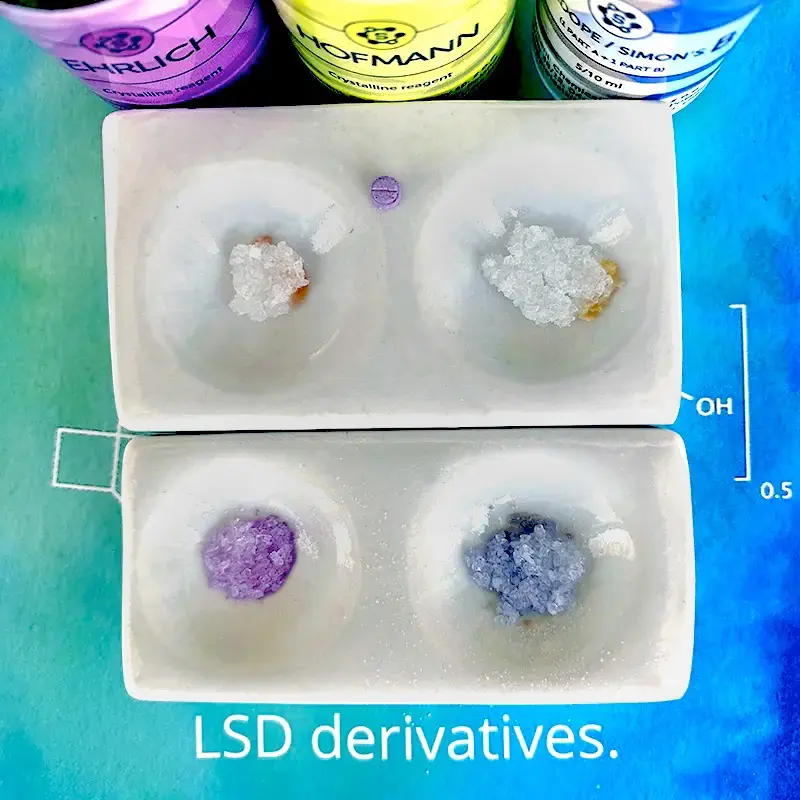
Unactivated vs activated 1V-LSD pellet with Ehrlich and Hofmann reagents at 15 minutes
Old way of testing LSD derivatives:
If you do not have any alkaline reagent you can arm yourself with patience and allow more time for reagents to activate sample and eventually produce the expected color change.
Check the result after 1 and 12 hours
Extended observation is the simplest method of testing the latest LSD analogues. If the sample reacts immediately, it may indicate the presence of trace amounts of already transformed LSD, which is a concerning signal regarding the product’s legality. However, if the change is slow and limited primarily to the sample itself, such a result indicates the presence of an “acid” derivative.
Make Sure the Sample Changes Color
The sample can change color even if the rest of the reagent shows no color change, and this should also be considered a positive result. Ehrlich and Hofmann tests are for the most part binary (yes/no), any color change determines the result, with its intensity being unimportant. An exception is the situation described earlier, where the substance during storage underwent partial decomposition, and in spite of false sense of legal safety, it began to contain a small amount of illegal LSD-25.
Rely on the Hofmann Reagent for LSD
Hofmann reagent, unlike Ehrlich, changes color to blue almost exclusively with LSD. In the case of 5-HTP or tryptophan, it changes the color from yellow to green. More reference results are available in our web application at protestkit.eu/results. We strongly recommend always using both the Ehrlich reagent and the Hofmann reagent (both available in our kit LSD Test Kit). The Ehrlich test alone indicates the presence of indole (chemical structures containing a part referred to as indole), which can be LSD but also many other compounds such as other lysergamides, tryptamines, and even popular dietary supplements: melatonin and 5-HTP or tryptophan.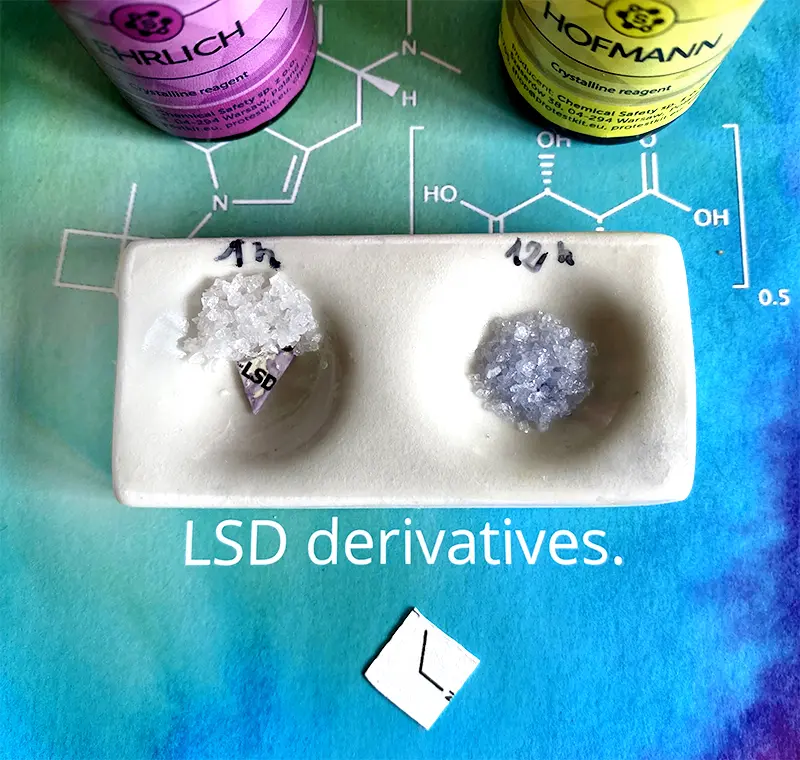
Testing LSD derivatives (unactivated)
LSD Derivatives Test Kit
The best LSD test kit for gels is the LSD Test Kit which includes reagents Ehrlich, Hofmann, Marquis, and Mecke. It can reliably confirm the presence of LSD-25 and rule out the possibility of any active adulterants. Typical substances sold as “acid” are either closely related new lysergamides such as 1P-LSD, 1V-LSD, or 1B-LSD, or more commonly inexpensive psychedelic stimulants from the phenethylamine class, such as NBOMe or DOC. The effects of lysergamides are difficult to distinguish from LSD as they metabolize into LSD, but NBOMe or DOC can be dangerous not only to the mind but even cause bodily harm or death if consumed in unwittingly heroic doses.
Keep in mind that the presence of a carrier (gel, blotter, tablet, or sugar cube) can cause false positives with corrosive reagents, so be sure to look for the appropriate color change to rule out phenethylamines rather than slow browning.
The same test kit can be used for testing DMT and many other chemical compounds, check the product’s respective page for more information.
Test kits for LSD and LSD derivatives:
Acknowledgments:
- LSD derivatives activation procedure: reagent-tests.uk
- 1D-LSD samples: LSD-legal.de
No test kit results can guarantee if a substance is safe. No substance is 100% safe.
